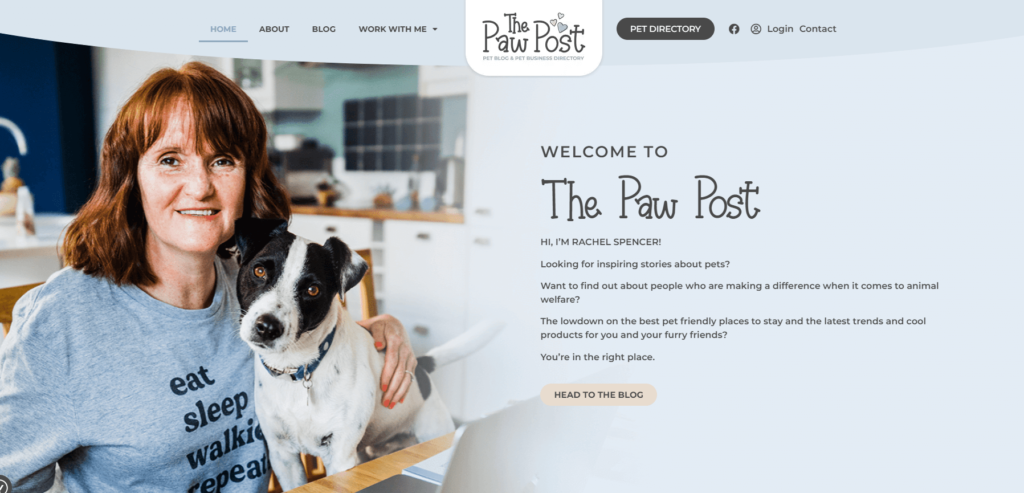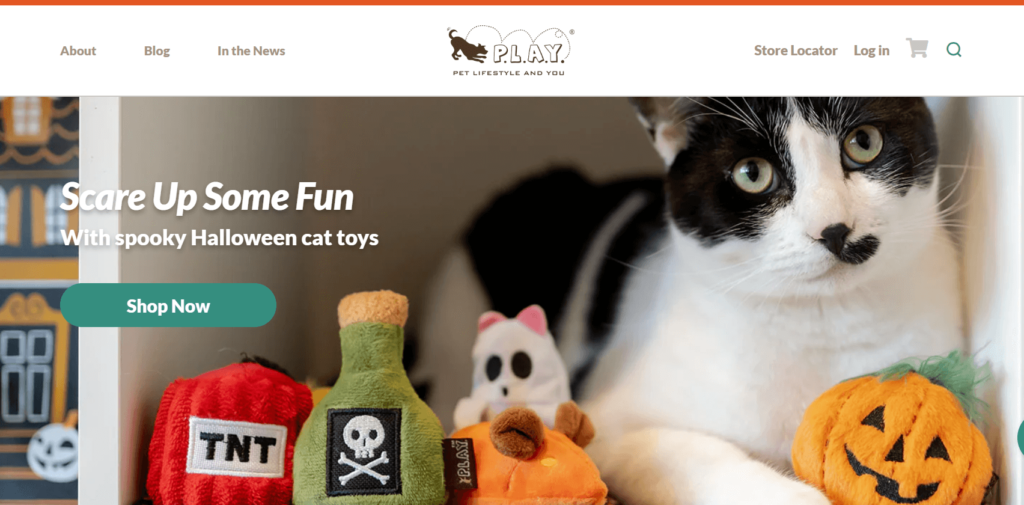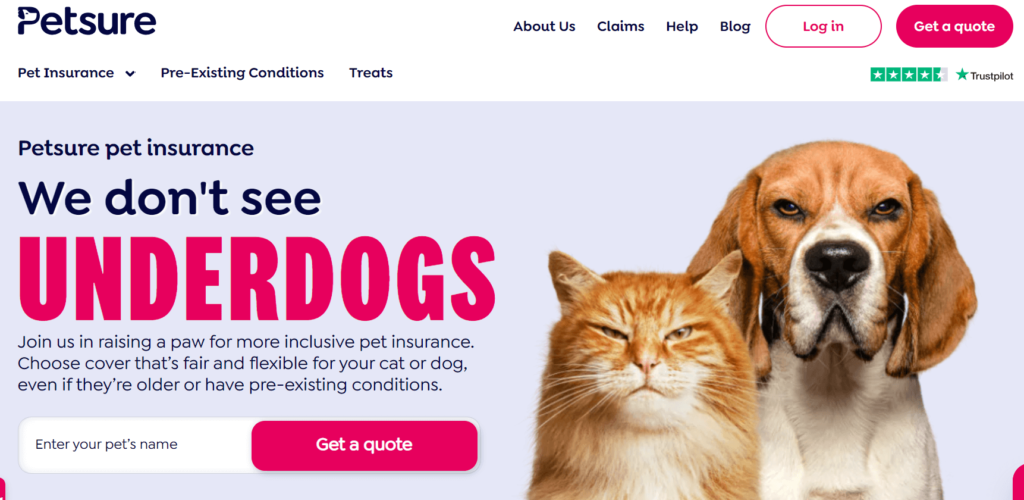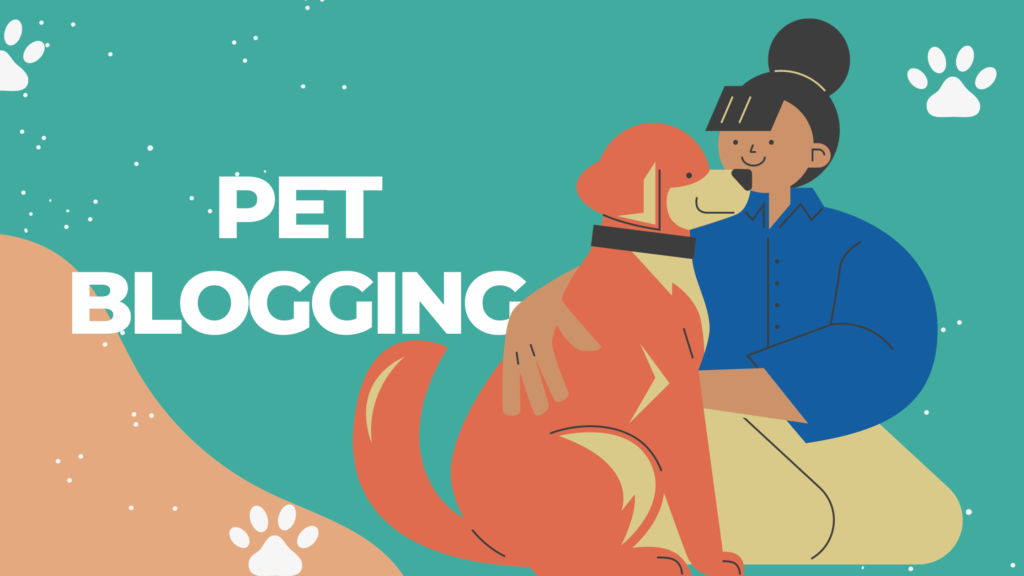Pet blogging is a paw-some niche, and it’s not just because pet owners adore their furry, feathery, or scaly companions. They’re more than willing to invest in their pets’ well-being, with figures showing that U.S. pet lovers spend an average of $1,201 per year on dogs and $687 per year on cats.
As you can see, there are numerous ways to spend on pets, from basics like food, vaccinations, and insurance to indulgences like grooming, training, and accessories. This abundant niche provides the perfect opportunity to start a pet blog.
In this comprehensive guide, we’ll embark on an exciting journey into the realm of pet blogging, helping you understand why it makes sense to start your pet blog, what a successful pet blog entails, and how to begin your pet blogging venture in a step-by-step manner. We’ll also explore various ways to monetize your pet blog, and you’ll gain insights into the potential earnings you can expect as a pet blogger in 2023.
Why Start a Pet Blog?
Make Money From Your Love of Pets
Imagine being able to transform your deep love and appreciation for pets into a source of income. With your own pet blog, this dream can become a reality. While you may not start earning a full-time income from day one, it’s entirely feasible to build your pet blog into a profitable venture over time. Many successful website owners have transformed their passions into income streams, and there’s no reason why you can’t do the same.

Promote Your Pet Business
Pet-related businesses of all kinds can benefit from the exposure and credibility that a well-maintained pet blog can offer. Whether you’re a dog walker, a cat groomer, or even a parrot elocution tutor, your pet-related business can thrive through blog-based promotion. By starting a blog, you can significantly increase your website traffic through search engine optimization (SEO). This entails identifying relevant keywords related to your niche, creating content targeting those keywords, and reaping the benefits of increased visibility on search engines.
Beyond these advantages, pet blogging can provide an additional avenue to earn money through affiliate marketing. If you already use various pet-related products in your business, you can join affiliate programs that align with your offerings. By promoting these products to your target audience through your blog, you can earn commissions for each sale generated via your unique affiliate links.
Build a Community
Yet, pet bloggers are not merely driven by monetary incentives. What often motivates individuals to create pet blogs is a genuine love and passion for animals. Whether you’re a dog enthusiast, a dedicated cat parent, or even a devoted pigeon fancier (yes, they do exist), your primary motivation for starting a pet blog is likely rooted in your sincere affection for pets.
Pet blogging offers a wonderful opportunity to build a community of like-minded individuals who share your passion for pets. Through your blog, you can connect with fellow pet fanatics, fostering a sense of camaraderie and shared purpose. This community can be a source of valuable advice and support for pet owners on topics like pet health and training. Furthermore, you can leverage your blog to promote and raise funds for your favorite pet charities, contributing to meaningful causes that align with your passion.
Steps to Start a Pet Blog
Now that you understand the reasons behind pet blogging, let’s dive into a step-by-step guide for launching your own pet blog. While it may seem like a daunting task, these nine straightforward steps will provide a clear path to realizing your pet blogging dreams:
1. Narrow Down a Pet Blogging Niche
The key to a successful pet blog is finding a niche within the pet world. Rather than creating a generic cat or dog blog, successful bloggers often focus on a specific subcategory within the broader pet domain. For instance, you can explore niches such as caring for disabled pets, traveling with pets, or selecting the best dog food.
This niche approach offers several advantages, including the ability to tap into a pre-existing audience and generate website traffic without competing with well-established sites. To determine the right niche for you, start by defining your target audience. This could encompass people planning to adopt their first pet, pet owners seeking health advice, individuals interested in specific pet breeds, those looking to understand their pet’s behavior, or dog owners searching for training tips. Ideally, you should possess some interest or expertise in your chosen pet niche.
However, professional training is not a prerequisite, as most bloggers share their learnings and experiences from raising their own pets.

With a bit of creativity, you can refine vague ideas into specific niche topics. For instance, consider creating:
- An informative resource guiding individuals on selecting the right dog or cat breed for adoption.
- A review site recommending essential products for first-time pet parents.
- A platform offering valuable pet health advice for those with older pets.
If you’re feeling less creative or struggling to identify the perfect niche, don’t worry. Two practical steps can help you uncover inspiration:
- Utilize SEO Tools: Make use of SEO tools like Ahrefs, a powerful platform that provides insights and data on various websites. With Ahrefs, you can enter the name of your favorite pet blogs, such as “Dog Food Advisor,” and use the Competing Domains tool to find sites ranking for similar keywords. Exploring these sites can serve as a wellspring of inspiration for your own blog.
- Explore Successful Pet Blogs: The FeedSpot database offers access to numerous thriving pet blogs. By studying these blogs and their respective social followings and posting frequencies, you can gather inspiration for your own site. The more pet blogs you explore, the more ideas you’ll uncover to shape your new blog.
2. Create Essential Website Pages
After narrowing down your niche, it’s time to set up your pet blog. Start by crafting essential website pages that form the foundation of your online presence:
– Homepage: Your homepage is often the first interaction visitors have with your pet blog. As such, it needs to be visually appealing, informative, and easy to navigate. This page should provide an overview of your blog and offer clear pathways for users to explore your content further.
– About Us Page: The “About Us” page is your opportunity to share your story and connect with your audience. Explain what inspired you to start your pet blog, introduce your own pets and their names, and share your personal experiences and passions within the world of pets.
– Contact Page: Your “Contact” page is a crucial element of your pet blog, as it enables users to reach out to you. Ensure that this page includes links to your relevant social media profiles and provides a contact form or email address to manage user inquiries, guest posting requests, and collaboration proposals.
– Privacy Policy: The “Privacy Policy” page is a legal requirement that explains the information you collect from your audience. To simplify the creation of your privacy policy, you can use online tools like PrivacyPolicies.com.
3. Start Creating Pet Blog Content
Now, the heart of your pet blog awaits: creating content that caters to your audience’s interests and needs. However, before you dive into writing articles, it’s essential to lay some groundwork. Researching and targeting the right keywords can significantly impact your blog’s success.
Keyword research may sound complex and tedious, especially if you’re new to SEO, but it doesn’t have to be. The effort is worthwhile because, when you target the right keywords with substantial search volumes and low competition, you can attract a significant amount of website traffic from search engines.
But how do you discover these valuable keywords? You have two primary options:
– Manual Keyword Research: This approach involves conducting your own keyword research by Googling broad terms related to your niche. Explore the “Related searches” section in search engine results to find more specific, long-tail keywords relevant to your niche.
– Utilize SEO Tools Like Ahrefs: A more efficient approach is to use tools like Ahrefs for keyword research. After logging into Ahrefs, navigate to the “Keywords Explorer” tool. Enter a broad “seed” keyword, such as “dog food,” and look for keywords that meet specific criteria:
- Low keyword difficulty scores (ideally 15 or lower).
- Decent search volume (ideally at least 100 searches per month, although this varies by niche).
- Keywords with commercial search intent (phrases containing words like “best,” “review,” and “vs”), especially if you plan to monetize your blog through affiliate marketing.
Based on your seed keyword, Ahrefs will provide a list of potential keywords. For example, if you used “dog food” as your seed keyword, you might discover options like “best dog food for allergies” or “best dog food for picky eaters.”
Each of these keyword ideas can serve as the basis for individual blog posts. It’s crucial to stick to one theme per post, ensuring a clear focus. For instance, a post about the best dog food for allergies should not veer into discussing different types of allergies but should stay on topic, saving related subjects for other posts and linking between them.
Here are some best practices for writing engaging and informative posts for your pet blog:
- Choose a specific theme for each post, strictly adhering to your chosen niche.
- Define a clear purpose for each post. Identify the desired action you want readers to take after engaging with your content, whether it’s signing up for your newsletter, reading another post, or making a purchase.
- Keep your audience in mind while writing. Understand your target audience’s interests and avoid overly explaining basic concepts if your readers are experienced pet owners.
- Encourage readers to participate in the conversation. Building a community around your pet blog is essential. Prompt your audience to share their opinions, recommendations, or follow-up questions in the comments section or on social media.
- Inject some personality into your writing. Remember that you’re crafting a pet blog, not an academic journal. Don’t shy away from incorporating personal anecdotes and examples, as this makes your content more relatable.
4. Promote Your Pet Blog
After dedicating time and effort to crafting high-quality content for your pet blog, it’s essential to ensure that your hard work doesn’t go unnoticed. While search engine optimization (SEO) can certainly help attract organic traffic to your blog, relying solely on SEO isn’t sufficient. Statistics show that nearly 95% of all web pages do not rank within the top 10 search positions on Google within a year of being indexed.

To maximize the visibility of your pet blog, consider implementing these additional blog promotion strategies:
– Write Guest Posts for Other Sites: Guest posting is a strategy where you reach out to websites with audiences that align with your blog’s niche. You then write guest posts for these websites, providing you with the opportunity to introduce yourself and your blog to a new audience. Guest posting not only enhances your online presence but also helps in building backlinks, which can improve your blog’s SEO.
– Share Posts on Social Media: Every time you publish a blog post, make sure to share it across your social media profiles. Additionally, consider seeding your content in relevant online forums and communities, such as Facebook Groups and subreddits.
– Build a Mailing List: Encourage your readers to subscribe to your newsletter. This enables you to maintain a direct line of communication with your audience. Whenever you release a new blog post, you can send it directly to their email inboxes, keeping them engaged.
– Pay for Search and Social Ads: Once your pet blog starts generating income, you can explore the option of promoting your blog or individual articles through search and social media advertisements. While this method can drive significant traffic, it can also be costly and may not be suitable for every sub-niche.
– Maintain Post Focus: Ensure that each of your blog posts is dedicated to a single purpose. Avoid the temptation to cover too many topics in one post. If you find that your content is veering toward another subject, consider creating separate posts to maintain a clear and focused structure.
How Do Pet Bloggers Make Money
As a pet blogger, there are several ways to monetize your blog. The approach you choose depends on your goals, your audience, and your level of experience. Here are some common methods:
1. Affiliate Marketing
Affiliate marketing is a favored and efficient way to monetize a blog in any niche, including pet blogging. It’s passive, meaning it doesn’t disrupt your audience’s experience on your pet blog. Affiliate marketing allows you to recommend products and services you’ve used and enjoyed to your readers. By including affiliate links in your content, you earn a percentage of the sales generated through those links.
Importantly, this doesn’t cost your readers any more than they would already pay. Many pet product manufacturers and service providers offer affiliate programs, although their quality varies. For recommendations, refer to our guide on the 40 best pet affiliate programs in 2023.
2. Display Advertising
Another way to generate passive income from your pet blog is through display advertising. This method involves partnering with major ad networks to display ads on your site. Google AdSense is one of the most prominent ad networks, but its payouts may not be particularly appealing.
Networks such as AdThrive and Mediavine, on the other hand, offer better returns. Keep in mind that these premium networks often require a substantial number of monthly page views, making them less accessible for brand-new pet blogs. One downside to display advertising is that it can impact the visual aesthetics of your website.
3. Sponsorship Deals
Another avenue for making money through advertising is securing sponsorship agreements with pet product manufacturers or service providers. This approach often grants you greater control over how ads appear on your site, reducing the risk of ads dominating the screen and potentially discouraging visitors. You can also negotiate your advertising agreements directly with brands to maximize your earnings.
However, this method involves additional work, including providing tracking, reporting, analytics, and payment processing. Brands are more likely to engage with well-established blogs, so if you’re just starting out, it may take some time to attract sponsorships.
4. Sell Your Own Products
Some pet bloggers opt to create and sell their products, typically falling into one of two categories: digital products and services. Digital products may include online courses and downloadable ebooks designed to solve specific problems faced by your audience, such as litter-training a kitten or teaching obedience to a dog.
Services can involve selling your time and expertise, and offering live video consultations on pet training, for example. Selling your products can potentially yield higher earnings, but it also involves substantial effort. You need to develop products that people are willing to pay for and manage various aspects, including payment processing, handling complaints, and processing returns. It’s not a passive income method.
5. Memberships
Some pet bloggers transition their platforms into membership sites, requiring visitors to pay a subscription fee or fixed cost to access premium content or courses. While this method offers an excellent opportunity to increase your income, it’s not without its challenges. Setting up a membership site necessitates providing comprehensive customer service, and it’s not feasible for brand-new blogs unless you offer unique expertise that can’t be found elsewhere for free.
How Much Money Can You Make From Pet Blogging
It’s vital to maintain realistic expectations when it comes to earnings in the world of pet blogging. Most pet bloggers don’t earn substantial income immediately, and some may never reach high earning levels. It’s essential to keep in mind that blogging requires time, dedication, and effort to become a full-time income source.
To provide some perspective, bloggers in the United States typically earn an annual income of approximately $45,000, according to Indeed. However, it’s important to note that this figure excludes thousands of bloggers who generate little to no income from their blogs. The potential earnings can vary significantly.
Consider Dog Food Advisor, one of the pet blog success stories. This blog, which focuses exclusively on dog food, is estimated to be worth over $1.9 million in organic traffic every month, according to Ahrefs data. This impressive revenue comes from creating content related to dog food. So, while it may seem unbelievable, it’s a testament to the profitability of niche pet blogging.
In summary, it’s entirely feasible to earn a full-time income in the pet blogging world, but it requires time, hard work, and a solid strategy. Anyone who promises quick and easy riches is likely not offering a genuine opportunity.
FAQs
Do Pet Blogs Make Money?
Yes, top pet blogs have significant earning potential. For example, Dog Food Advisor, a blog that focuses on dog food, generates over $1.9 million in organic traffic value each month. However, achieving this level of success takes time and dedicated effort. Most pet bloggers don’t earn substantial income immediately, and success may vary.
Is the Pet Industry Profitable for Bloggers?
Absolutely. The pet industry is a highly profitable niche for bloggers. In the United States, pet owners spend a substantial amount of money on their pets, with the pet care industry projected to exceed $230 billion by 2030. This creates ample opportunities for bloggers to tap into the industry’s profitability by providing valuable content and promoting relevant products and services.
The world of pet blogging is full of potential, offering you the chance to turn your love for animals into a rewarding online venture. In 2023, embark on your pet blogging journey, and watch as your passion transforms into a prosperous online enterprise.

